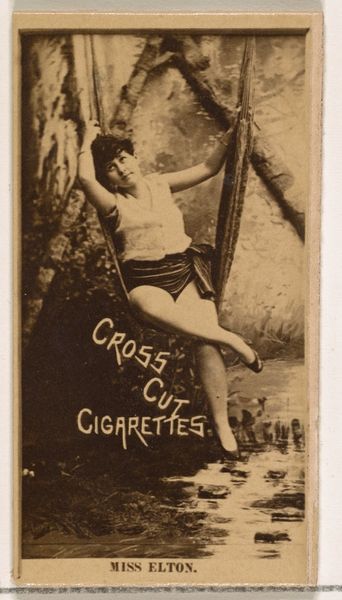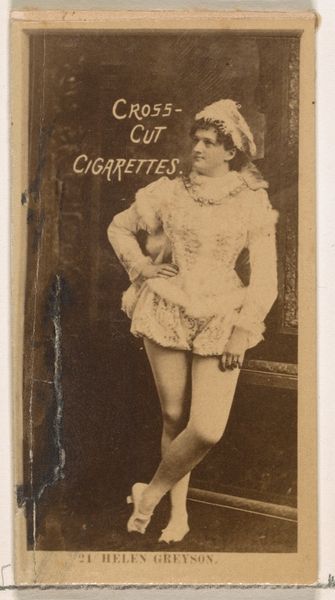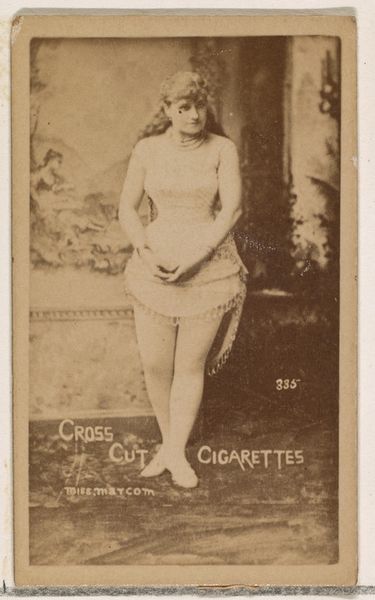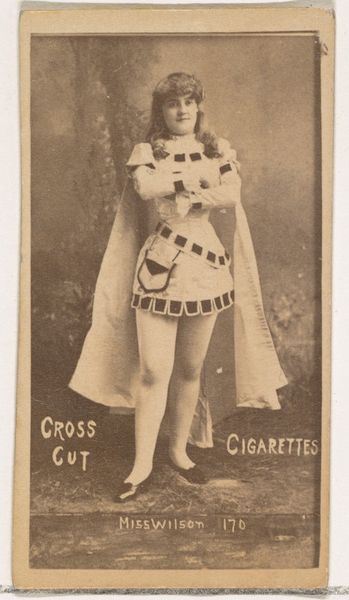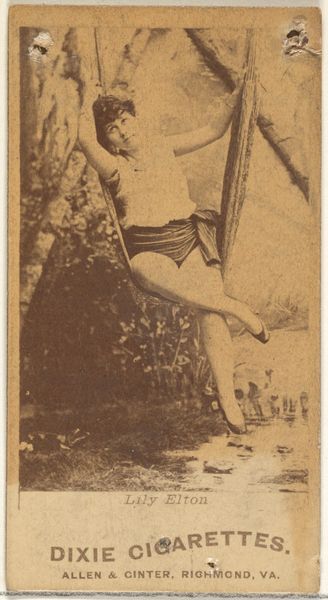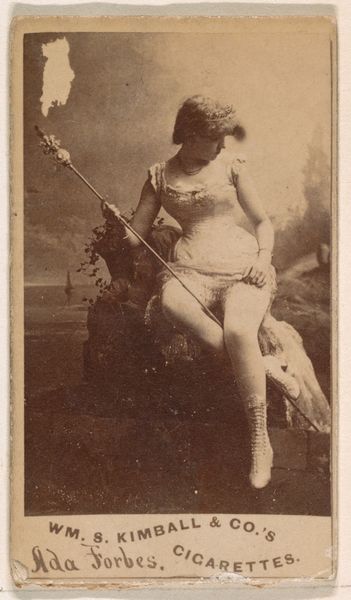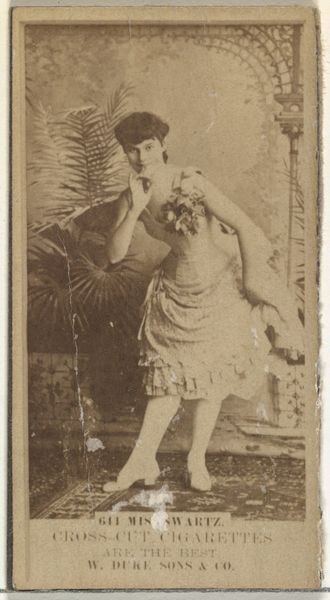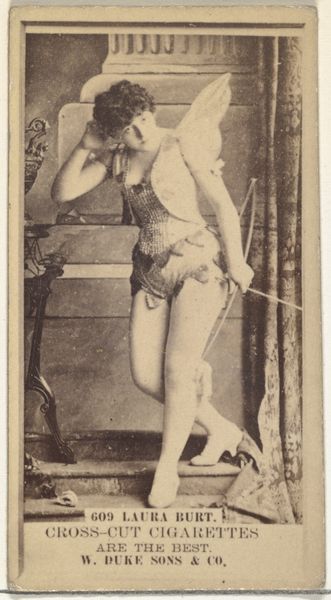
Card Number 26, Miss Elton, from the Actors and Actresses series (N145-1) issued by Duke Sons & Co. to promote Cross Cut Cigarettes 1880s
0:00
0:00
drawing, print, photography
#
portrait
#
drawing
# print
#
photography
#
nude
Dimensions: Sheet: 2 1/2 × 1 3/8 in. (6.4 × 3.5 cm)
Copyright: Public Domain
Editor: This is "Card Number 26, Miss Elton," a print from the 1880s by W. Duke, Sons & Co. It was created to promote Cross Cut Cigarettes. The photograph presents an intriguing image of a woman in a rather precarious, exposed position. What layers can we unpack here? Curator: Indeed. The overtly sexualized image of Miss Elton within this commercial context demands critical examination. This card wasn't simply about selling cigarettes; it was about selling a lifestyle, a fantasy that intertwined consumption with the commodification of the female body. How might we view this as part of the larger narrative of women being objectified and commodified by capitalist structures during this era? Editor: So, the advertisement normalizes the idea of women being reduced to commodities? Curator: Precisely. This is not just a portrait; it is an advertisement created within a specific cultural and economic milieu. Consider how the image's composition itself – her near nudity, the somewhat vulnerable pose – might be actively constructing a male gaze. And who was Miss Elton? Was she given any agency over her own representation? These questions open up dialogues about power, exploitation, and the construction of gender roles within a commercial space. Editor: It makes me think about how these portrayals were part of a bigger system of controlling how women were perceived. Where did performers stand in this? Curator: Exactly. And by analyzing the distribution and consumption of these cards, we can also uncover important insights into the social norms and power dynamics of the late 19th century. How did this card affect the perception of women who were circus performers or actresses? Whose gazes was this image primarily meant to satisfy, and how might this card perpetuate societal inequalities? Editor: I see the historical weight it carries, going far beyond a simple picture on a cigarette card. Thank you for illuminating this piece through that lens. Curator: And thank you for your sharp observations. This highlights the need for a continuous, critical re-evaluation of the images and artifacts that shape our understanding of the past and present.
Comments
No comments
Be the first to comment and join the conversation on the ultimate creative platform.
